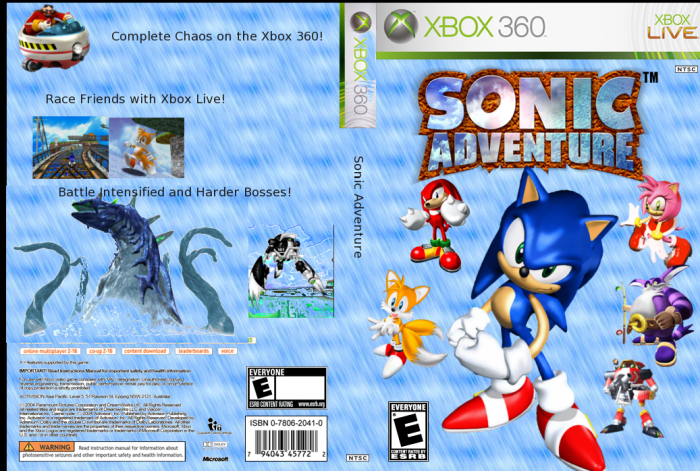

Its successor, the Saturn, was released in Japan in 1994. It became the most successful Sega console ever, at 30.75 million units sold. In 1988, Sega released the Genesis (known as the Mega Drive in most countries outside North America), in the fourth generation of video game consoles. Many Dreamcast games are regarded as innovative, including Sonic Adventure, Crazy Taxi (1999), Shenmue (1999), Jet Set Radio (2000), Phantasy Star Online (2000), and high-quality ports from Sega's NAOMI arcade system board. It is considered ahead of its time for pioneering concepts such as online play and downloadable content. In retrospect, reviewers have celebrated the Dreamcast as one of the greatest consoles. The Dreamcast's commercial failure has been attributed to a variety of factors, including competition from the PlayStation 2, limited third-party support, and the earlier failures of the 32X and Saturn having tarnished Sega's reputation. Its bestselling game, Sonic Adventure (1998)-the first 3D game in Sega's Sonic the Hedgehog series-sold 2.5 million copies. 9.13 million Dreamcast units were sold worldwide. After a change in leadership, Sega discontinued the Dreamcast on March 31, 2001, withdrew from the console business, and restructured itself as a third-party developer. Dreamcast sales did not meet Sega's expectations, and attempts to renew interest through price cuts caused significant financial losses. However, sales steadily declined as Sony built anticipation for the PlayStation 2. Though its Japanese release was beset by supply problems, the Dreamcast had a successful US launch backed by a large marketing campaign. The Dreamcast was the first console to include a built-in modular modem for internet access and online play. Developers were able to include an optional, custom version of the Windows CE operating system on game discs to make porting PC games easy.

Sega used the GD-ROM media format to avoid the expenses of DVD-ROM technology. In contrast to the expensive hardware of the unsuccessful Saturn, the Dreamcast was designed to reduce costs with off-the-shelf components, including a Hitachi SH-4 CPU and an NEC PowerVR2 GPU.

The Dreamcast was Sega's final console its 2001 discontinuation ended the company's eighteen years in the console market.Īn internal Sega team led by Hideki Sato began developing the Dreamcast in 1997. It was the first sixth-generation video game console, preceding Sony's PlayStation 2, Nintendo's GameCube, and Microsoft's Xbox. The Dreamcast is a home video game console released by Sega on November 27, 1998, in Japan September 9, 1999, in North America and October 14, 1999, in Europe.


 0 kommentar(er)
0 kommentar(er)
